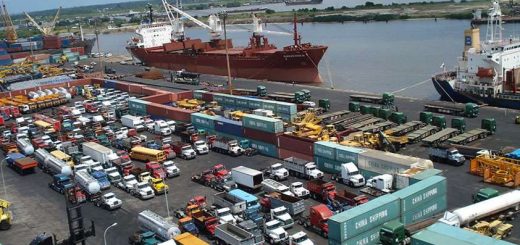Inbound Logistics (5 Key Issues to Consider for the Effective Management)

“Innovation is one of the key drivers of logistics excellence in this age and a key determinant of competitiveness in Global Supply Chain.”
What is Inbound Logistics?
Inbound logistics refers to the management of the transportation, storage, and delivery of goods or materials that are received from suppliers or vendors and used by a company to manufacture its products or provide its services. It includes activities such as receiving, storing, inventory management, and transportation planning to ensure timely and cost-effective delivery of the raw materials or goods to the production or service location. Effective inbound logistics management can help a company to reduce costs, improve productivity, and optimize the supply chain.
More than ever, customers across diverse sectors expect logistics providers to adopt or effectively apply more innovative ways of managing moving goods faster, better and cheaper with no room for errors.
Given the importance of these performance expectations Logistics Providers and Freight Forwarders in every Supply Chain must pay attention to the following techniques for effectively managing Inbound Logistics:
Hire A Competent Logistics Manager: A competent Logistics Manager will find it easy to relate with and interpret established systems and processes, ask all the right questions, understand customer requirements, possess the technical knowledge and ability to identify potential challenges and satisfactorily resolve them whenever they occur.
A competent Logistics Manager is always able to coordinate internal processes, persons, material and technological resources for the effective management of customers’ expectations and report customer feedback and recommend improvement actions if required.
Plan Each Transaction as If It Were the Last: Planning for end-to-end logistics requirements will help to adequately determine expectations and identify potential risks, costs and the required controls for an error-free logistics process from the very first contact.
The more each transaction is subjected to several layers of planning and review, the more effective it becomes. This will set the precedent for establishing, implementing and maintaining high-performance standards.
Be Flexible – Have A Plan B: Following the planning stage, where resources may be positioned to achieve the desired delivery results, there must always be a deliberate follow-through on all arrangements. From established terms of service to pick-up, carriage, and the cost to delivery, things may go as planned, but changes can occur in the course of any transaction, but only contingency plans (plan B) can address those changes if or when they occur.
Eliminate Human-Induced Errors: Establish and maintain a system that defines a consistent standard in relation to tasks that must be performed at each stage of the logistics process with a predictable outcome.
This can include methods of gathering customer requirements, file opening, operations, invoicing, file closing and post-delivery follow-up. Such a system will eliminate assumptions or guess works and costly errors. Better still, an automated process usually considers technological solutions to enhance communication between providers and their customers; process visibility through online tracking and monitoring of the entire process up to customer feedback.
Conduct Customer Feedback Survey: Customer service is the ultimate goal of logistics, and so paying keen attention to customer requirements, expectations, and feedback. It shows a clear commitment to meeting customers’ expectations.
Visibility and tracking: Utilize technology such as supply chain management software, barcoding, and RFID tags to track and monitor inbound shipments and to gain visibility into the status of materials and goods in transit.
It gives the customer an excellent opportunity to help in shaping your logistics strategy. It gives the provider an opportunity to either learn from mistakes or improve. Above all, it creates an atmosphere of trust and emotional connection between customers and logistics providers.
All the foregoing techniques should be considered because the line between logistics excellence and failure is the excellent understanding of service requirements and innovating ways of meeting or the absence of both.
Read more: Effective management of Inbound Management.



